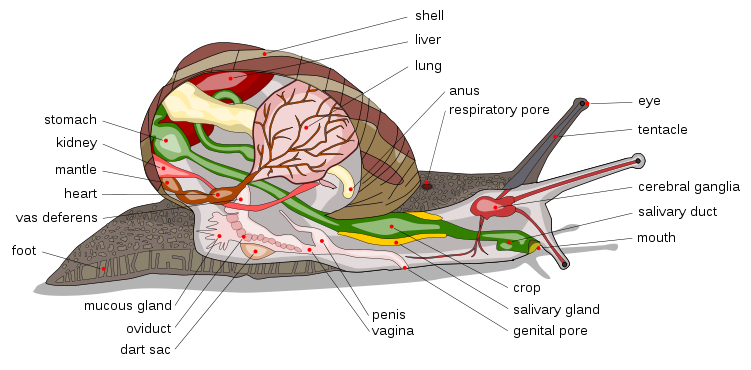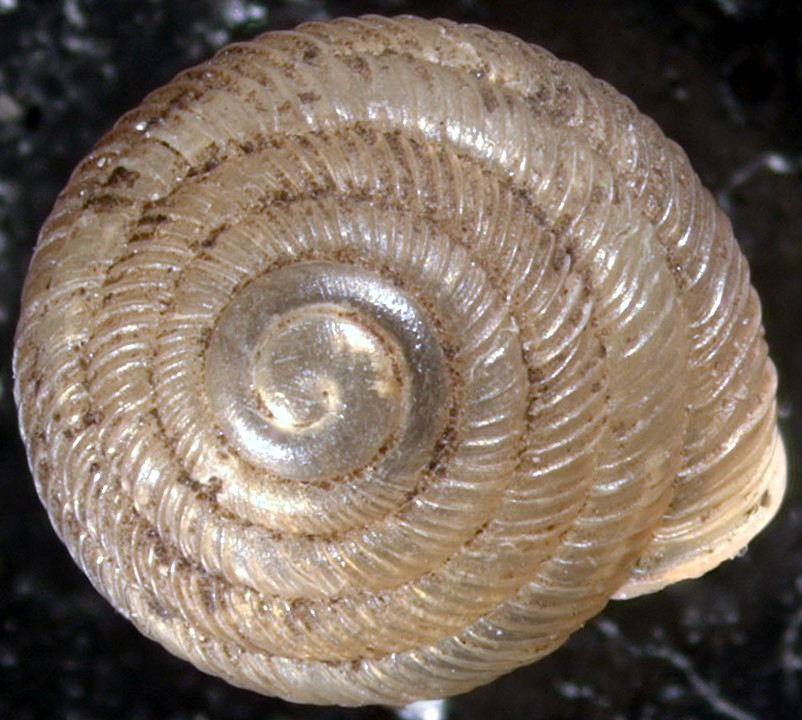
Adaptation
Strobilops labyrinthicus along with all other Pulmonates
have lost their gills and have formed an air breathing sac or
lung. The mantle cavity wall has become more vascularized and
has turned into a lung sac. By relaxation and
contraction of the mantle muscles, air is moved in and out of a
small opening called the peristomium. This is how
oxygen and carbon dioxide gases are exchange with the
environment and the vascular system of the snail. Because
these snails have a lung sac they no longer need to have a gill
(Archerd,2008). 
Pulmonates also have some other adaptations they have gone through to be able to survive living on land. One thing that snails have to do well is conserve water because water is more scarce on land. They do this with having more complex excretory systems. Nitrogen and other wastes are turned into uric acid which is then excreted as a solid crystalline waste (Archerd, 2008). In the formation of uric acid most of the water is taken out. This water is then reabsorbed by the body. This reabsorption of water helps the snail conserve as much water as possible.
Many snails in the Superorder Stylommatophora have also changed their feeding and reproductive habits. These snails can only be active only when the humidity in their microhabitat is 90% or above. This causes many of the snails to be nocturnal in both feeding and reproduction because the air is more humid at night (Archerd, 2008).
What does this snail eat? Nutrition
